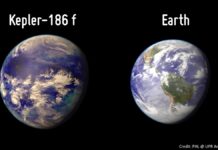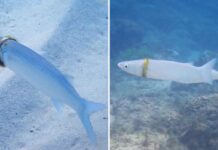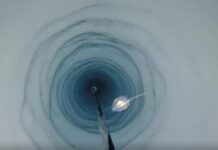A bizarre form of ice – believed to exist within the interior layers of Uranus and Neptune – has been discovered on Earth.
Scientists at California’s Lawrence Livermore National Laboratory have created a new form of ice called hot “superionic ice” – which exists at pressures between one and four million times that at sea level and temperatures half as hot as the surface of the sun – that’s unlike any other type of ice on Earth.
The highly electrically conductive ice can remain frozen at even the highest degrees of heat. The scientists are confident the findings of the experiment could explain how giant ice planets, such as Uranus and Neptune, work including the origins of their unusual magnetic fields.
In a paper published in the journal Nature, scientists explain how they used giant lasers to flash-freeze water and create superionic ice, taking X-ray images of the rare ice’s atomic structure in the process.
First, a thin layer of water was placed between two diamond anvils. Then six giant laser beams were used to generate a series of shockwaves at progressively increasing intensity to compress the water at pressures up to 100-400 gigapascals (or 1 to 4 million times Earth’s atmospheric pressure) while also heat the water to 1,650 and 2,760 degrees Celsius (the surface of the Sun is 5,505 degrees Celsius).

The x-rays revealed that the water inside the shock wave didn’t become a superheated liquid or gas. Paradoxically, the atoms froze solid, forming crystalline ice. The oxygen was tightly packed into face-centered cubic crystals — little boxes with an atom at each corner and one in the middle of each side.
“Finding direct evidence for the existence of crystalline lattice of oxygen brings the last missing piece to the puzzle regarding the existence of superionic water ice,” said Marius Millot, lead author and physicist at LLNL. “This gives additional strength to the evidence for the existence of superionic ice we collected last year.”
In 2018, the scientists created Ice VII, which is the crystalline form of ice above 30,000 times Earth’s atmospheric pressure (or 3 gigapascals) and blasted it with lasers. In last year’s experiment, the team could not observe the ice’s crystalline structure. In this year’s experiment, the scientists created Ice XVIII, which is the crystalline form of ice nearly 4 million times Earth’s atmospheric pressure (or 400 gigapascals).

Federica Coppari, study co-lead author and LLNL physicist, explained:
“We wanted to determine the atomic structure of superionic water. But given the extreme conditions at which this elusive state of matter is predicted to be stable, compressing water to such pressures and temperatures and simultaneously taking snapshots of the atomic structure was an extremely difficult task, which required an innovative experimental design.
“The X-ray diffraction patterns we measured are an unambiguous signature for dense ice crystals forming during the ultrafast shockwave compression demonstrating that nucleation of solid ice from liquid water is fast enough to be observed in the nanosecond timescale of the experiment.”
The experiment confirms the prediction that extreme pressures and temperatures could turn water into superionic ice (made by physicists 30 years ago). The experiment also confirms the prediction that superionic ice can remain stable even at the depths of more than 8,000 km (which is one-third of the radius of Uranus and Neptune).
Further, the experiment shows that Uranus and Neptune could have a solid mantle, like Earth, but made of hot superionic ice instead of hot rock. And because superionic ice is highly conductive, the experiment could help explain why the ice planets have unusual magnetic fields, tilted at bizarre angles, and with equators that don’t circle the planet. Millot added:
“Because water ice at Uranus and Neptune’s interior conditions has a crystalline lattice, we argue that superionic ice should not flow like a liquid such as the fluid iron outer core of the Earth. Rather, it’s probably better to picture that superionic ice would flow similarly to the Earth’s mantle, which is made of solid rock, yet flows and supports large-scale convective motions on the very long geological timescales. This can dramatically affect our understanding of the internal structure and the evolution of the icy giant planets, as well as all their numerous extrasolar cousins.”






